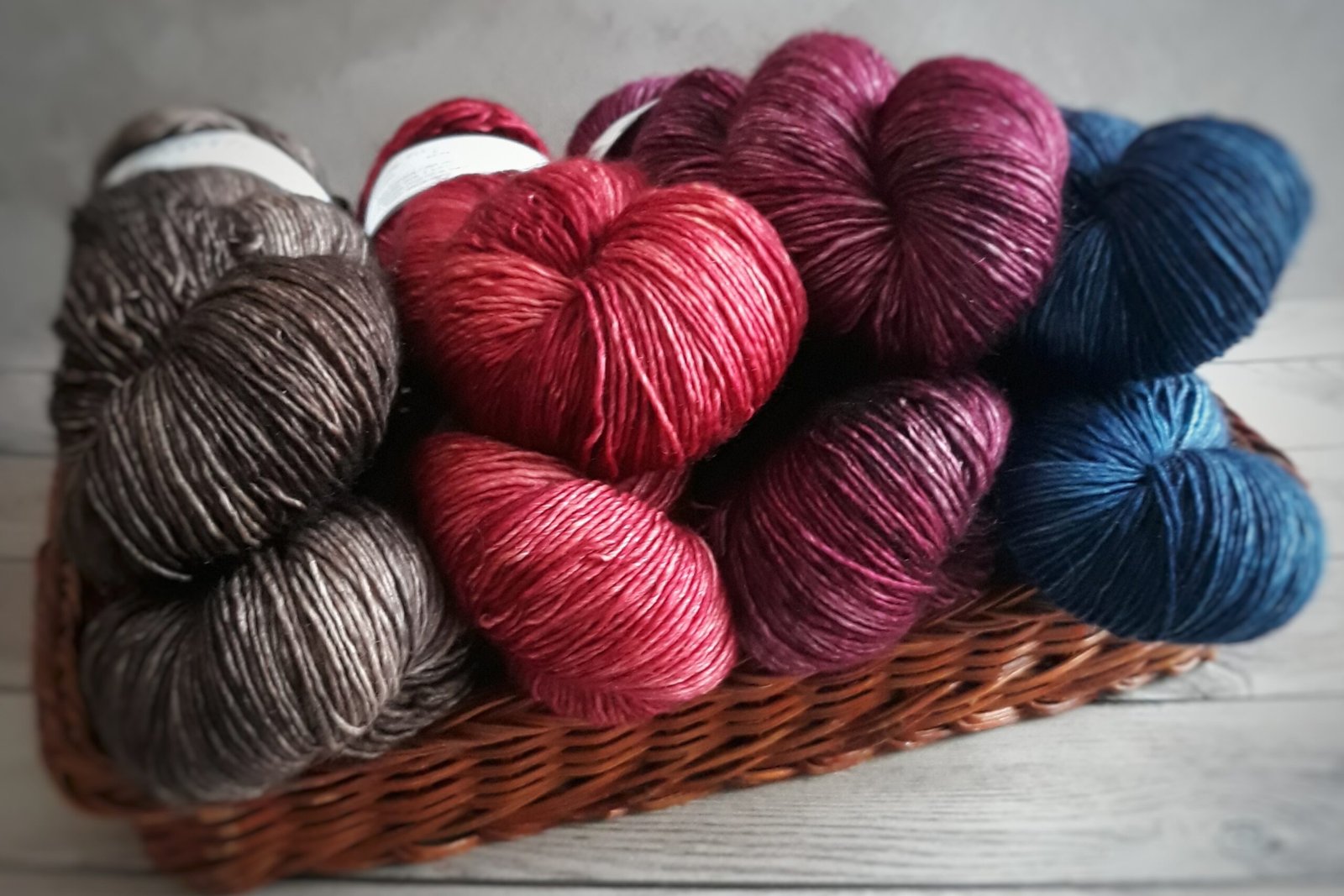A basic element in fabric making is yarn. The simplest way to explain, yarn is a length of fibers, they are interlocked to produce fabrics as well as crocheting, knitting, embroidery, and ropemaking. Textile yarn is defined as a thread used to make cloth through various knitting processes. Fibers are natural or man-made substances that are used for making yarns, they are used in the process of textile, weaving, sewing, embroidering, etc. Different types of yarns are produced for other purposes.
How yarn is made?

Generally, yarns are made by spinning fibers into a yarn machine or by hand using natural or synthetic fibers and filaments. Yarn is an interlocked thread-like material created by spinning several filaments or threads together. Through the spinning process, fibers are removed from their sources and twisted and locking them to give them interlocked texture. Filament/synthetic yarns require more twisting than natural ones. The quality of the yarn depends on the number of twists produced, thus, the higher the number of twists, the stronger the yarn produced.
Classifications of yarns
We can classify the yarns by structure or how they are made, basis of the number of twists or the number of strands there are. They are:

One Ply or Single Yarns: Single yarns or one-ply yarns consist of a single strand that holds fibers together with the minimum twists. For filaments, there is either the use of one filament (called monofilament) or more than one filament that is grouped with the minimum twist or even no twist. S-twist or Z-twist is more common in this type.
Staple Yarns or Spun Yarns: Made from staple-length fibers, or those which are only a couple inches long. Most staple yarns are made of natural materials such as cotton, and they are wound or twisted together. In some instances, longer filaments may be cut to staple fiber size. All staple fibers must face the same direction before they are wound.
Ply Yarns or Folded Yarns: They are made by twisting two or more single yarns together in the opposite directions of the original spin to create a single yarn. A two-ply yarn is made by twisting two single strands together. A three-ply yarn is made by twisting three single strands together. Multiple-ply yarns are used for making strong fabrics or fabrics that require more strength or need more surface effect.
Cord Yarns: By twisting ply yarns together are made cord yarns, they usually follow the SZS twists. the cord yarns are used to make ropes or cables etc. strong materials.
Filament Yarns: They are much longer than staple yarns, they are made of one or more strands of filament that continuously run the entire length of the yarn. Most filament yarns are synthetic which are made through mechanical or chemical processes, the only type of natural filament yarn is silk.
A few other yarns based on special effects or characteristics are Novelty Yarns, Textured Yarns, etc.
What are the types of yarns?

Yarns types are: Natural/Plant-based, animal-based, Man-made and Blended, different types of yarns are used for different purposes. Yarns used for weaving are designed to be durable, strong and not stretchable, they have a tight twist, smooth surface and lots of lengthwise strength. Yarns used for knitting have a looser twist, more elasticity, and a softer feel. Weaving yarns are typically sold in cones and knitting yarn is sold in a ball or skein.
Natural/Plant Based Yarns:
Cotton, Jute, Linen, Hemp, Bamboo, etc. are natural or plant-based yarns.
They are breathable and lightweight, good for warm-weather garments. Natural yarns are also biodegradable and eco-friendly. Cotton yarns are soft, durable and absorbent, they are perfect for summer garments and accessories. Linen is strong and durable, it gets softer with each wash. It is a good fit for lightweight garments. Hemp is very much eco-friendly yarn, a good fit for sustainable theme-based garments. Bamboo has natural anti-bacterial properties; they are soft and luxurious yarn.
Animal-Based yarns:
Animal-based yarns are known for their super softness, warmth and durability. Wool is the most popular animal-based yarn, it is warm and durable with luxuriously soft, high-breed sheep’s wool would be the most expensive. Wool is naturally warm and doesn’t feel wet, thus it is perfect for cold-weather garments. Silk, made from cocoons of insects, silk fiber yarn is elegant, it has a beautiful drape and sheen. Alpaca and Mohair are also animal-based fiber yarns, that are good for cold-weather garments.
Man-made yarns:
They are often cheaper to produce compared to the natural yarns. Man-made yarns are generally available in large quantities and a wide range of colors, easy to care for. Polyester, Synthetic, Acrylic, Nylon, etc. are man-made fiber yarns.

Synthetic yarns are suitable for people with sensitive skin or allergies, available in a wide range of colors. Acrylic yarns are soft, and come in many colors but are not as breathable as natural yarns. Nylon is strong and lightweight; it can be blended with other yarns as well.
Blended Yarns:
Blended yarns are a mix of different natural or synthetic fiber yarns, for example, wool-nylon blends, polyester-wool blends, cotton-polyester blends, etc.



